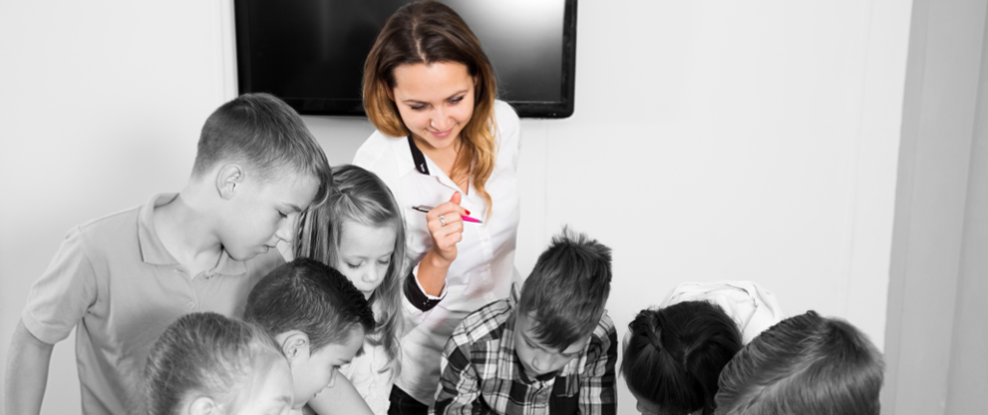In a classroom full of diverse learners, everyone needs attention, asks a multitude of questions, and requires different solutions. It can be disconcerting for the regular teacher, so imagine the plight of a substitute teacher, who enters a different classroom with unique learners each day. The challenges are even greater, but with a few basic skills, substitute teachers can maintain instructional momentum and positively impact classroom culture throughout their job assignments.
Best Instructional Practices for Diverse Learners
A passion for educating young people motivates teachers to strive to meet the varying needs of a classroom of diverse learners. It’s hard work that requires getting to know learners well enough to assess and understand their needs and idiosyncrasies. Challenging enough for regular classroom teachers, it can be nearly impossible for substitutes who are with students for a short time. But with some basic practices that can be applied in a variety of classroom settings and content areas, it is possible to address students’ learning needs even in the short term of a teacher’s absence.
Understand child development
Though a substitute meets students on a temporary and transient basis, having a basic understanding of the typical capabilities of children at various ages and developmental stages is essential, as well as the diverse ways they learn. Knowing details like attention span limits and capacity to follow multi-step directions provides a starting point for meeting students’ needs in the classroom.
Learn names and use them
While substitute teachers may be with students for a short time, making an effort to address them by their names makes a difference. As a first step toward meeting students’ needs, it shows a personal connection and acknowledges students as individuals. A seating chart is very helpful here.
Be consistent
Even while a substitute teacher is adapting to the newness of each classroom assignment, consistency is important. Since it affects both classroom management and student security, consistency helps to establish an environment conducive to all types of learning.
Make connections
New learning is facilitated when students can connect it to prior knowledge and past experiences. When a substitute teacher takes time to share their own connections and gives students the opportunity to verbalize theirs as well, it provides scaffolding for the lesson. It helps students anchor new learning to something familiar and may help auditory learners absorb more information.
Be flexible and make adaptations
While regular classroom teachers have the advantage of time to learn about their students’ individual needs, substitute teachers most often do not. Being flexible is a quality that will allow a substitute to quickly recognize a need and make adaptations for it.
Utilize cooperative learning techniques
Acknowledging the social nature of students and recognizing that cooperative learning provides a strong foundation for learning, experienced substitute teachers are motivated to use this instructional strategy successfully. Though it requires careful oversight and solid classroom management, allowing students to learn with and from each other is worth the effort.
Use informal assessments
Skilled substitute teachers use frequent checks to see if students are comprehending the lesson. From sketching a quick K-W-L chart with student input, to asking “what questions do you have?”, to inviting them to give a “thumbs up” if they understand, frequently assessing student learning allows substitutes to make needed adjustments.
Maintaining Diverse Learning Best Practices During Teacher Absences
In spite of the relatively short amount of time spent with students, a substitute teacher can impact classroom culture and influence student learning in a positive way. Starting with a few key teaching practices, professional substitutes can evolve as practitioners when they are willing to learn themselves.
By listening to, observing, and learning from students, substitute teachers absorb what works. A willingness to collaborate allows them to work alongside classroom paraprofessionals and special education staff, acquiring additional skills along the way. Employing a few adaptable instructional strategies allows diverse learning momentum to continue under the supervision of substitute teachers.
Ensuring Substitute Teachers Have the Capacity to Support Diverse Learning
Like teachers, many substitute teachers are motivated by a passion for student learning, but they typically have much less time to develop relationships with their classes. As a result, it can be much more challenging to ascertain student needs. However, by mastering a few key instructional practices, substitutes can maintain a positive classroom culture where student learners feel supported.
Ensuring that every one of your substitute teachers starts out with these important basic competencies is possible when you partner with an education staffing agency. They will work with you to understand your needs and design a customized program to share these instructional practices with your substitutes. Through face-to-face training with an experienced educator and ongoing opportunities to refine and add to their skills, a staffing agency provides substitute teachers with access to instructional and classroom management techniques that facilitate student learning and meet their diverse needs. When substitutes are armed with standard training in best teaching practices, learning will continue in spite of teacher absences and students will thrive.
Contact ESS to find substitutes who receive comprehensive training in the best teaching practices, allowing them to maintain a positive classroom environment where learners’ unique needs are met.

